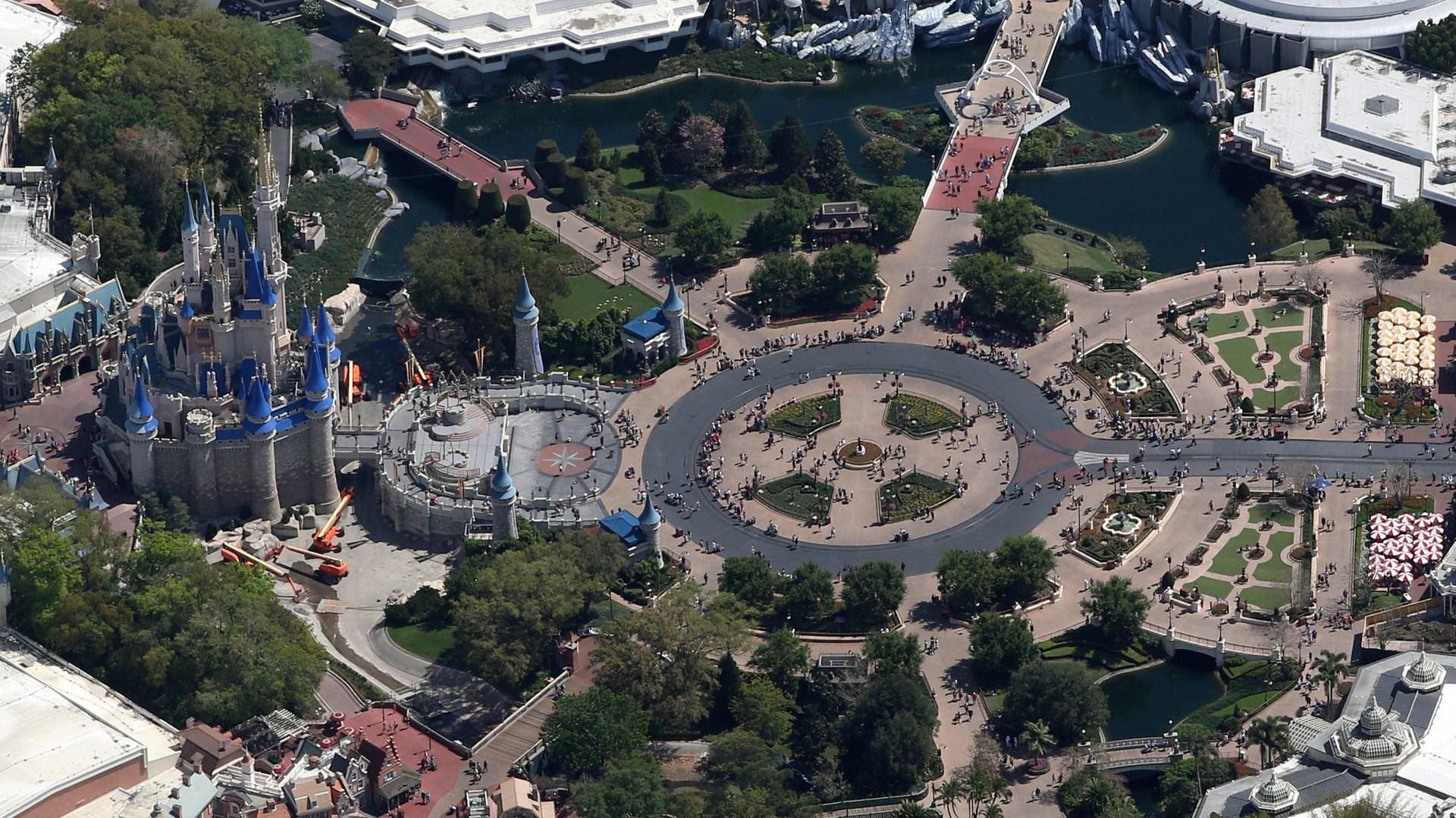How did Disney get its own special district in Florida?
The Florida legislature voted on Wednesday (April 20) to annul Disney’s powers to govern its own special district in the state. The move, seeming retribution for Disney’s criticism of Florida’s new “Don’t Say Gay” law, could end in the dissolution of the Reedy Creek Improvement District, created in 1967 especially for the company to build Walt Disney World.


The Florida legislature voted on Wednesday (April 20) to annul Disney’s powers to govern its own special district in the state. The move, seeming retribution for Disney’s criticism of Florida’s new “Don’t Say Gay” law, could end in the dissolution of the Reedy Creek Improvement District, created in 1967 especially for the company to build Walt Disney World.
To many, it was likely news that a private enterprise enjoyed such municipal powers in the first place—especially over an area as large as Reedy Creek, which covers more than 25,000 acres. In Reedy Creek, Disney can draft construction codes, manage a fire department, run utilities, and even erect a nuclear plant. To fund such services, the company issues municipal bonds, but also effectively pays itself property taxes; it also pays Orange County to use its police force.
All in all, it’s a pretty unusual setup—and a very literal conflation of big business with government. So how did Disney get to govern Reedy Creek in the first place?
The Reedy Creek Special Improvement District
In Disney lore, it all began with an airplane flight. As the journalist Richard Foglesong narrates in his book Married to the Mouse: In November 1963, flying south past Orlando, Walt Disney peered down at the intersection of two big highways and said: “That’s it.”
Disney had been scouting for a location for an eastern counterpart to Disneyland, which had opened in 1955. But he didn’t just want a few hundred acres to build an amusement park; he wanted a much larger parcel of land, and to manage the area over which the new park would preside. Disney felt he’d been burned in California: According to the minutes of a meeting in June 1965, he told his team that he didn’t want the new park’s surroundings “to become the jungle of signs, lights, and fly-by-night operations that have ‘fed’ on Disneyland’s audience.” Disney wanted control so much that the very word is underlined in the minutes, for emphasis.
What is a special district?
The company’s lawyers knew of a way to secure this measure of control. Since the 19th century, states have created special districts—pockets of local government that can issue debt to built necessary infrastructure. (The Tennessee Valley Authority, for instance, is a special district.) The number of such districts grew in the 20th century. By 2002, there were 35,000 special districts, the Census Bureau reported that year—”almost three times the number…reported in 1952.” Today Florida has nearly 1,850 special districts.
A Florida State University Law Review article (pdf) describes how, by mid-1965, Disney had bought around 43 square miles of its desired land, for just over $5 million. It was a lot of land. In a promotional film, Walt Disney stood in front of a large map, pointed to the borders of his new territory, and said: “According to this scale, I am six miles tall.”
The following year, a circuit court created the Reedy Creek Drainage District, a Trojan Horse of a legal move by Disney. On paper, this only allowed Disney to start draining the marshy soil on both its own and adjoining land. But it relied on a statute that prevented minority landowners from blocking Disney’s drainage plans. And the drainage district held the seeds for its eventual transformation into a full-fledged special district.
How Disney designed itself a special district
Meanwhile, Disney’s lawyers plotted the future of Reedy Creek, which would be governed by a board of five supervisors, all of whom had to be landowners in the district—a neat scheme, given that Disney’s land was held by five Florida corporations controlled by Disney. Through 1966 and 1967, Disney lobbied to get legislative approval for its “special district.” In a 900-seat movie theater, Roy Disney—the brother of Walt, who had died by then—screened a film about his company’s vision for an experimental, futuristic community of 20,000. “Wasn’t that a dream?” he said when the film ended. “Doesn’t that stagger you?”
The company was making it sound as if it wanted to build a city for long-term residents, but Disney was always clear that any residents in the area would be temporary, and that they wouldn’t own land—so that they couldn’t get onto the supervisory board. A county attorney, Foglesong wrote, admitted to being “kind of shaken by the degree of control” Disney wanted.
In 1967, Florida passed a 92-page bill (pdf) giving Disney the powers it sought, and turning the Reedy Creek Drainage District into the Reedy Creek Improvement District. But as the state giveth, the state taketh away. Wednesday’s decision overturns that 1967 legislation. Florida stripped Disney of its powers, but it will also assume a $1 billion Disney debt and have to fund part of Disney’s annual $355 million budget for Reedy Creek, costs which may now have to be borne by taxpayers. The debt contingency clause was worked into the company’s agreement with Florida. Even now, amidst the potential dissolution of Reedy Creek, Disney’s lawyers have gotten off one last win.